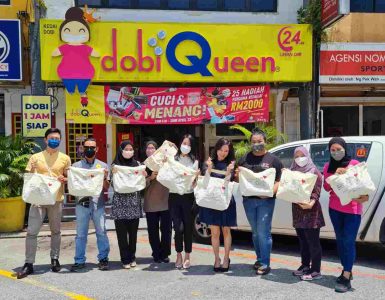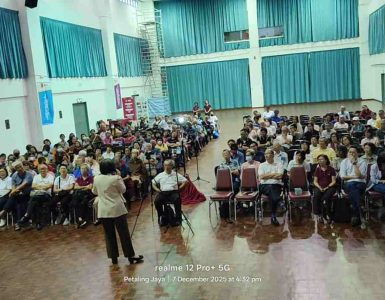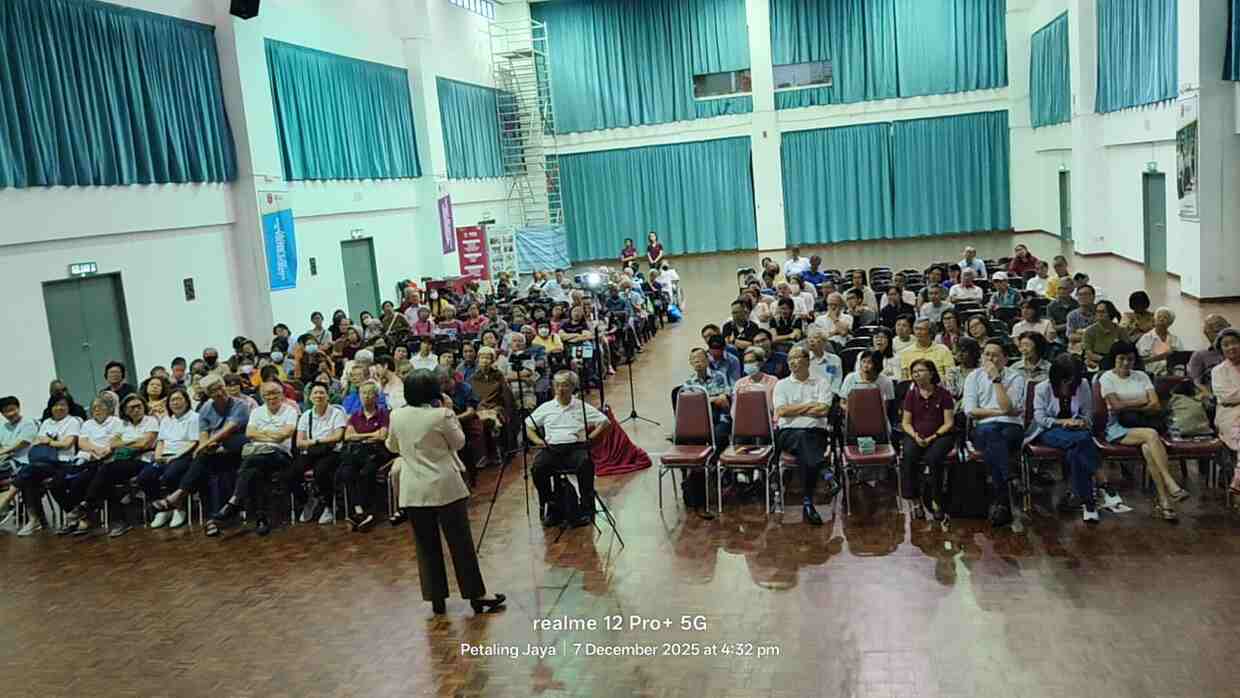A bamboo sunhat, known as the Sa’ung, originally belonging to the Kenyah Badeng people of Sarawak, Borneo, has been returned to its rightful home after over a century. The sunhat, which dates back approximately 128 years, was seized by British colonial forces during punitive expeditions in 1895 and 1896. These expeditions were often sanctioned by the Brooke family, the “White Rajahs” who ruled Sarawak from 1841 to 1941.
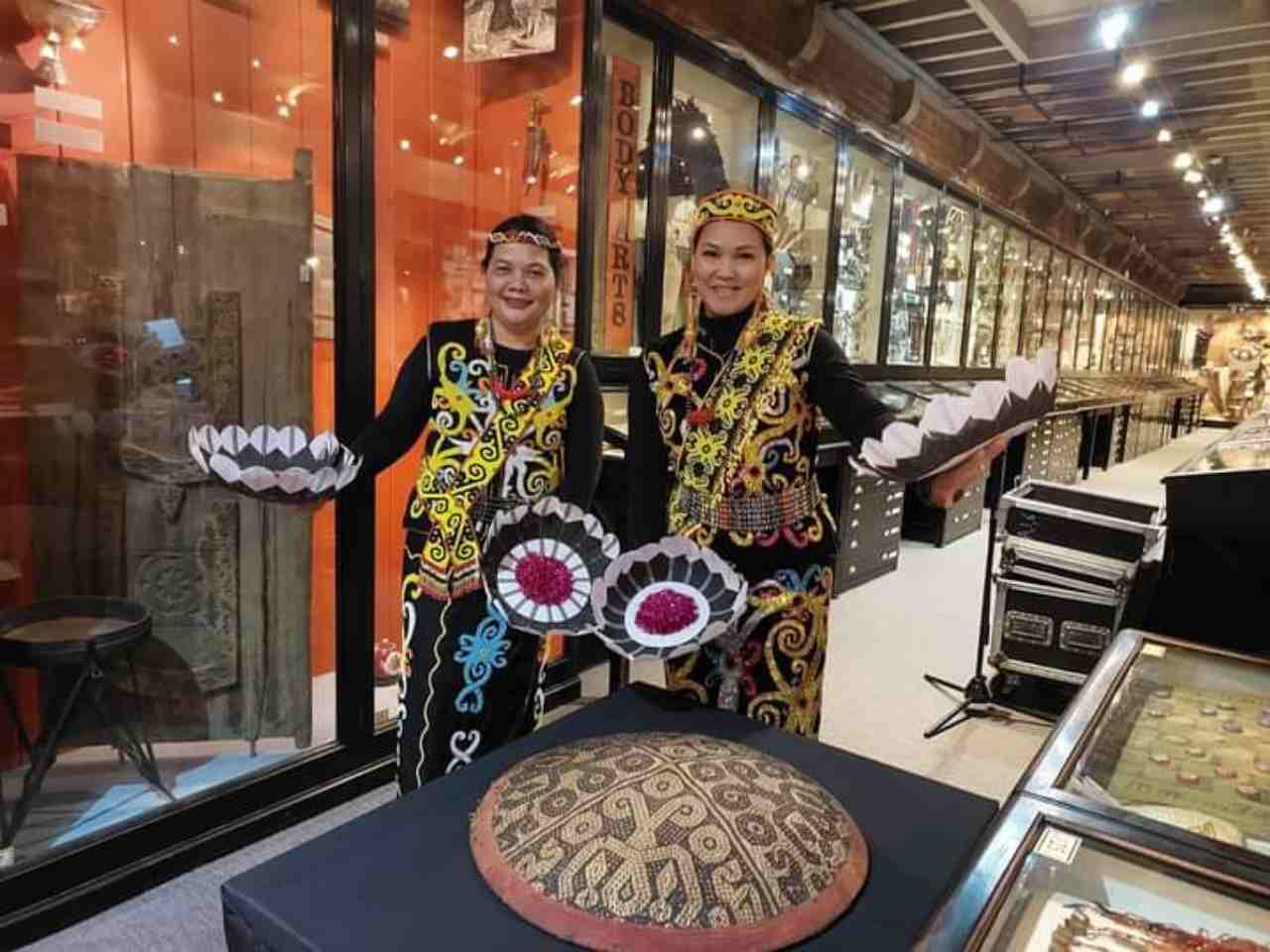
Taken to England in 1905 by Charles Brooke, the second White Rajah, the Sa’ung was later discovered at Oxford’s Pitt Rivers Museum, which held around 3,000 Borneo artefacts. Although it had never been publicly displayed, the artefact held significant historical and spiritual value, embodying the cultural identity of the Kenyah Badeng community.
The Sa’ung: Cultural significance and historical loss
The Sa’ung was more than a functional item; it held spiritual importance, providing both physical and spiritual protection for a Kenyah Badeng mother and her infant. This particular sunhat, intricately woven with bamboo and adorned with human figure motifs, is believed to have belonged to a noble family within the tribe.
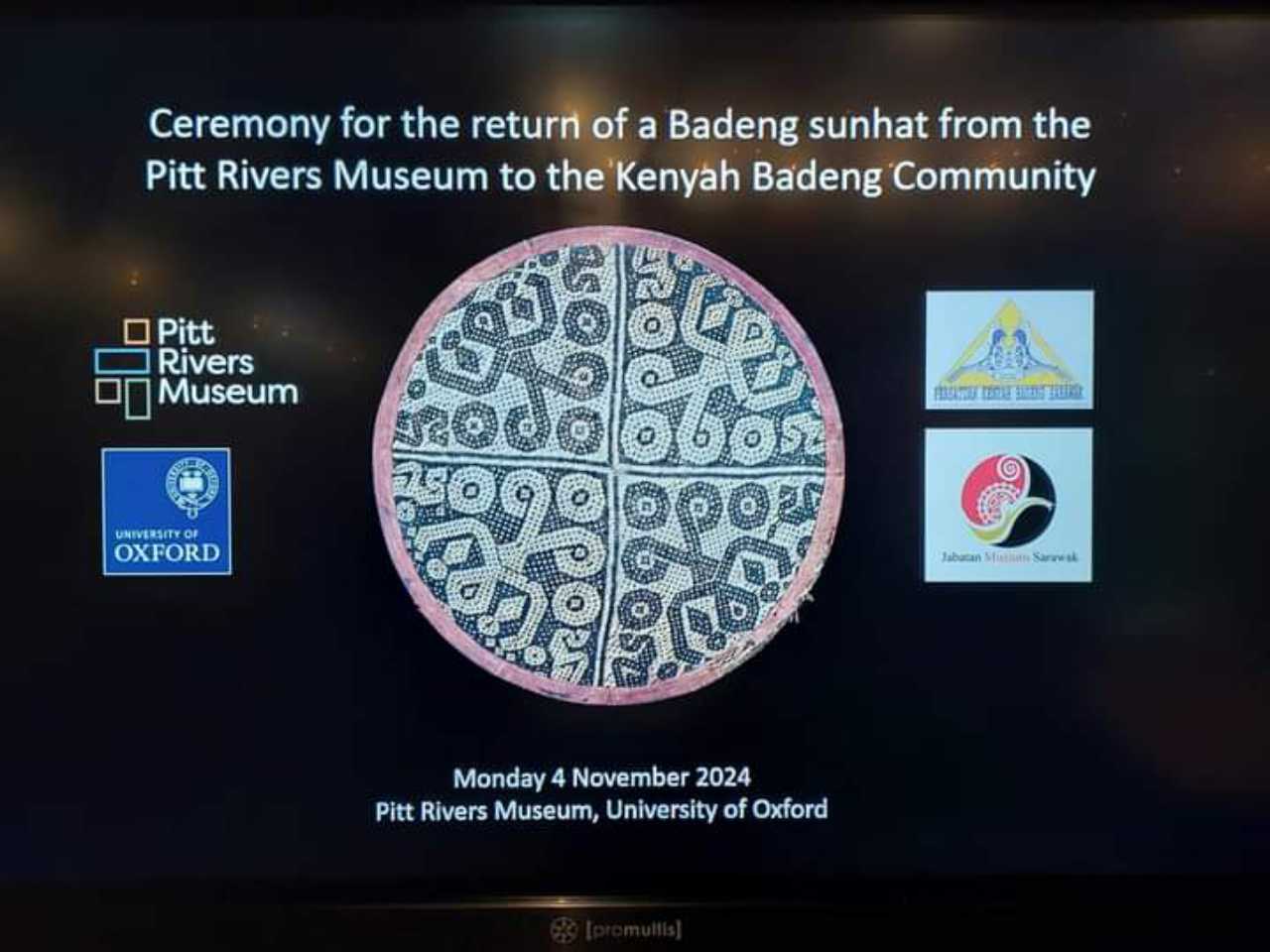
Historical records indicate that the hat was seized after the Kenyah Badeng people allegedly failed to pay taxes, leading British forces to confiscate personal items and cultural artefacts. This hat is one of six artefacts taken from the Kenyah Badeng tribe in the 1890s, marking a traumatic period where indigenous communities faced relentless oppression, displacement, and the destruction of their heritage.
Path to repatriation
The journey to bring the Sa’ung home began in earnest in 2017, when the Sarawak Museum Campus Project conducted an extensive audit of its artefacts. During this audit, researchers uncovered evidence of the sunhat’s presence at the Pitt Rivers Museum, sparking renewed discussions around its return.
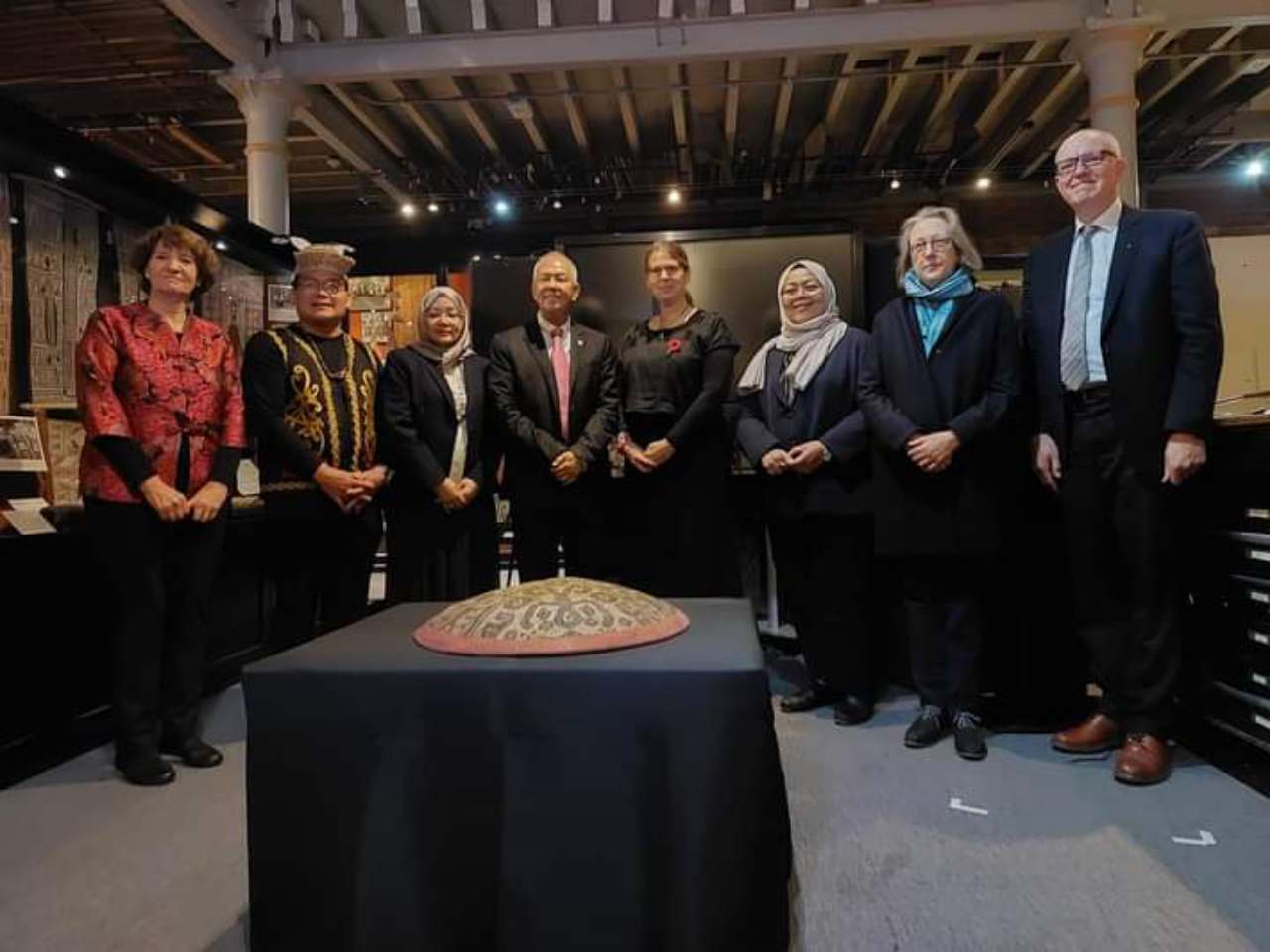
In May 2023, a delegation from Sarawak’s Tourism, Creative Industry and Performing Arts Ministry, along with the Sarawak Museum Department, met with the museum’s leadership in Oxford to initiate formal repatriation talks. Prof Dr Laura Van Broekhoven, director of Pitt Rivers Museum, expressed her commitment to the process, stating that the museum’s history of acquiring objects tied to colonial violence necessitated a redress of such historical wrongs.
Prof Van Broekhoven, in a statement, emphasised that the return of the Sa’ung goes beyond a simple transfer of ownership. “Given the history of parts of our collections and their entanglements in military violence and oppression, this work of redress is crucial, helping to restore trust and understanding,” she said. The ceremony, held at Oxford University, marked the first time Pitt Rivers Museum returned a cultural item to an indigenous group, having previously only repatriated ancestral remains.
A new chapter for the Kenyah Badeng community
The return of the Sa’ung represents a profound moment for the Kenyah Badeng people. The sunhat’s repatriation not only acknowledges the injustices inflicted on their community but also reinforces the preservation of their history. The Sa’ung will be exhibited at the Borneo Cultures Museum in Kuching, Sarawak’s largest city, completing a collection of six artefacts from the Kenyah Badeng tribe that tell the story of resilience, survival, and cultural richness.
Sarawak’s Deputy Minister of Tourism Datuk Sebastian Ting and officials from both Sarawak and Oxford attended the handover, witnessing a powerful moment of cultural restitution and historic healing.
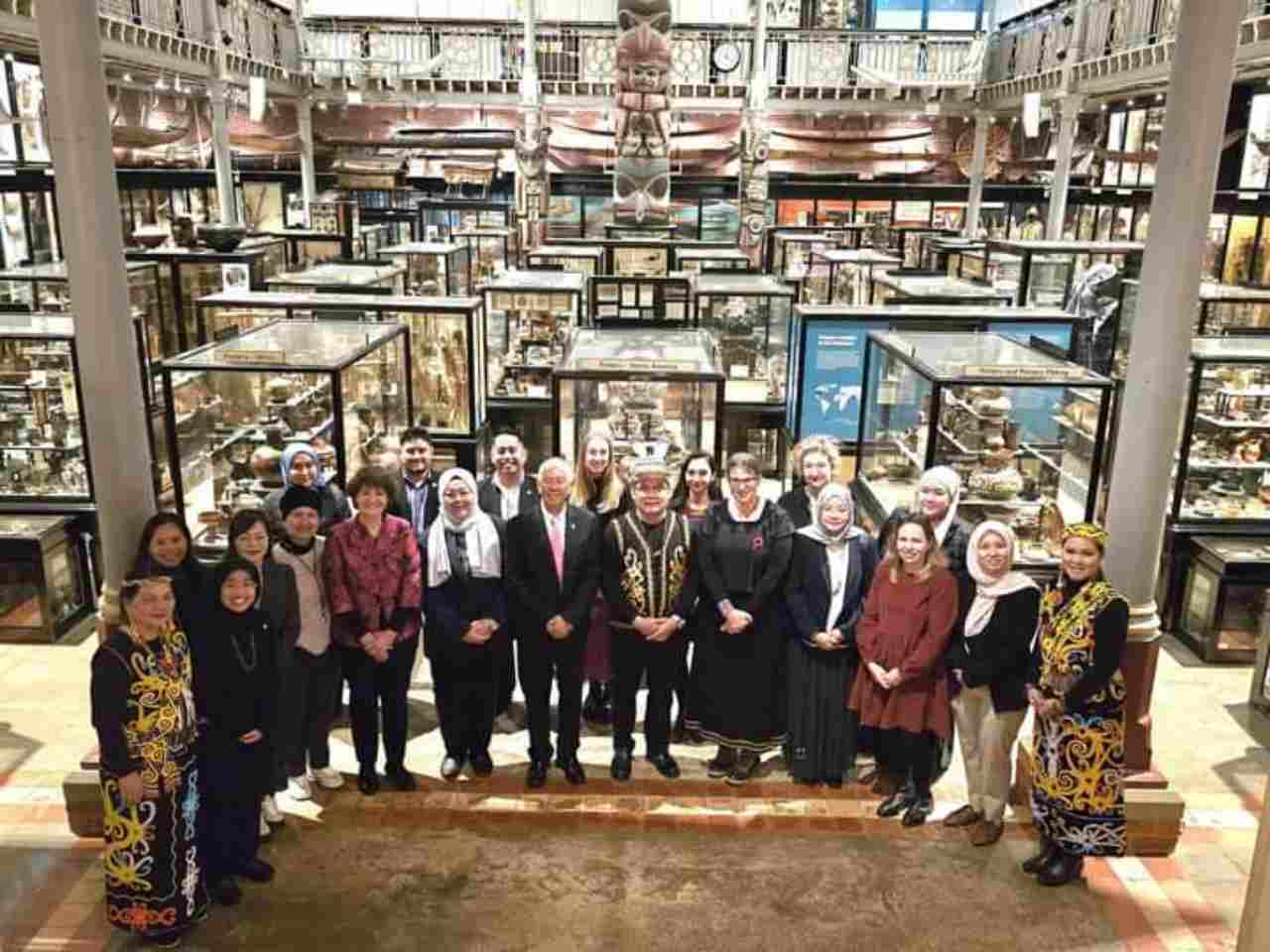
This repatriation is part of a broader, global movement where museums and institutions increasingly recognise the need to reconcile with colonial histories by returning cultural heritage items. The Sarawak government lauded the return as “the restoration of history, dignity, and identity” for the Kenyah Badeng, following the 2020 return of Niah bone fragments to the Sarawak Museum.



